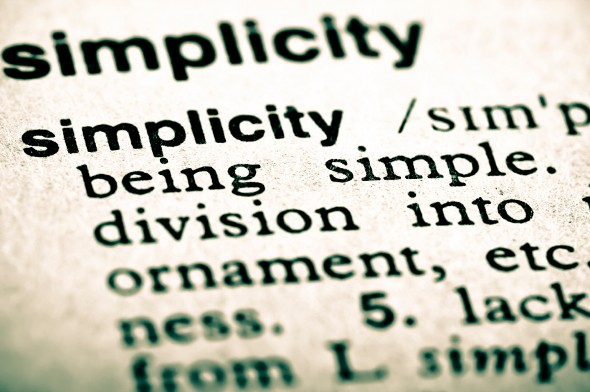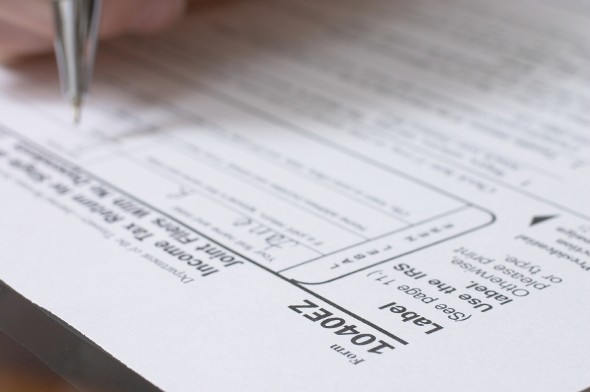
In late 2017, President Trump signed a new tax plan into law. The legislation consolidated the forms 1040, 1040A and 1040EZ into a single redesigned Form 1040 that all filers can use. For your 2024 taxes, which you’ll file in 2025, and beyond you will continue to use this new Form 1040.
If you have questions about filing your taxes, a financial advisor can help you optimize your tax strategy for your financial needs and goals. Find a financial advisor today.
Form 1040EZ Eligibility
Form 1040EZ was meant to simplify the filing process for filers who had relatively simple tax situations. For tax years 2017 and before, you were eligible to use Form 1040EZ if you met the following criteria:
- Your filing status was single or married filing jointly
- You did not claim anyone as your dependent
- You (and your spouse, if you’re filing jointly) were under age 65 in the relevant tax year, and not blind
- Your taxable income was less than $100,000
- You had only wages, salaries, tips, taxable scholarship or fellowship grants, unemployment compensation, or Alaska Permanent Fund dividends, and your taxable interest was not over $1,500
- You did not owe any household employment taxes (also known as Nanny Taxes) on wages you paid to a household employee
- You were not a debtor in a Chapter 11 bankruptcy case filed after Oct. 16, 2005
- Advance payments of the premium tax credit (for a health plan purchased on the ACA healthcare exchange) were not made for you, your spouse, or any individual you enrolled in coverage for whom no one else is claiming the personal exemption
Should You Use Form 1040EZ?

If you happen to be filing taxes for 2017 or earlier, you’ll need to meet the eligibility requirements listed above to use the 1040EZ. But just because you’re eligible to use Form 1040EZ doesn’t necessarily mean that you should. Even the IRS acknowledges that some filers may benefit more if they declare their income using Form 1040A or the original (and longest) Form 1040.
If all that matters to you is filing your tax returns as quickly and easily as possible, by all means, go for Form 1040EZ. Just know that you might not be getting all the tax credits and deductions for which you’re eligible. If you use Form 1040EZ you can only claim the Earned Income Tax Credit (EITC). Want access to other tax credits? You’re going to need a longer form.
How to Fill Out a 1040EZ

The 1040EZ tax form pretty much lives up to its “EZ” name. It’s only one page! The top of the page is the easiest part. It’s where you put your personal information, including your name, Social Security number and address. But remember, this form is only to be used if you’re filing your taxes from 2017 or earlier.
Reporting Your Income
The next section is where you report your income. On Line 1, include the income reported on your Form W-2 and attach your W-2 to the 1040EZ. On Line 2 you should report the taxable interest you earned. Remember, if this is more than $1,500 you cannot use Form 1040EZ.
On Line 3, report any unemployment benefits or Alaska Permanent Fund dividend payments you received. On Line 4, add lines 1, 2 and 3 to get your adjusted gross income (AGI). On Line 5, indicate whether someone can claim you (or your spouse if you’re filing a joint return) as a dependent. If so, check the applicable box(es) and enter the amount from the worksheet on the back of Form 1040EZ.
If no one can claim you (or your spouse, if you’re filing a joint return), enter the dollar amount indicated on the form, which will be different depending on whether you’re filing individually or jointly. On Line 6, subtract Line 5 from Line 4. If line 5 is larger than line 4, enter 0. The number you enter on Line 6 is your taxable income.
Claiming Credit
The next section of the form is called Payments, Credits and Tax. On Line 7, write the federal income tax withheld from Form(s) W-2 and 1099. Line 8a is where you put the amount you are eligible to claim in the Earned Income Tax Credit. The IRS has a chart that helps you figure this out.
Line 8b is for the nontaxable combat pay election, applicable to military filers only. According to the IRS, including nontaxable combat pay on your tax return’s income may increase or decrease your EITC. The IRS recommends that you compute the credit with and without your nontaxable combat pay before deciding whether to include it on your tax form.
On Line 9, add lines 7 and 8a. These are your total payments and credits. For Line 10, use the amount on line 6 to find your tax in the tax table in the form instructions. Then, enter the tax from the table. On Line 11 you should indicate whether you had full-year health coverage. If not, you will have to enter an individual responsibility payment. For Line 12, add lines 10 and 11. This is your total tax.
Getting a Refund
The next section of the form is for your tax refund. On Line 13a, if Line 9 is larger than line 12, subtract line 12 from line 9. This is your refund. On Line 13b, write the routing number for the bank account where you’d like to receive your refund. Indicate whether it’s a checking or savings account on Line 13c. On Line 13d, write the account number.
What You Owe
Line 14 is for those who owe money. If line 12 is larger than line 9, subtract line 9 from line 12. This is the amount you owe.
Third-Party Authorization
In the next section, you can indicate whether you would like to authorize a third party (such as an accountant) to discuss your return with the IRS. If so, write the person’s name, phone number and Personal Identification Number (PIN).
Sign and Date the Form
In the next section, you (and your spouse if filing jointly) should sign and date the form and provide your phone number and occupation. The next and last section is used by a paid tax preparer if applicable. You made it! However, since the form was decommissioned in 2017, you likely won’t be in a spot where you need to use Form 1040EZ.
Bottom Line
IRS Form 1040EZ was a shortened version of the IRS tax Form 1040. It allowed single and joint filers with no dependents with basic tax reporting needs to file their taxes in a fast and efficient way. President Trump’s 2017 tax plan eliminated the 1040EZ. When you file your 2024 taxes in 2025 or 2023 taxes in 2024, you will use the new redesigned 1040.
Tax Filing Tips
- Working with financial advisor can help you get your financial life in order. Finding a qualified financial advisor doesn’t have to be hard. SmartAsset’s free tool matches you with up to three vetted financial advisors who serve your area, and you can interview your advisor matches at no cost to decide which one is right for you. If you’re ready to find an advisor who can help you achieve your financial goals, get started now.
- If you don’t know whether you’re better off with the standard deduction versus itemizing your deductions, you might want to read up on the two options and do some math. You might find that you’d save a significant amount of money one way or another, so it’s best to educate yourself before the tax return deadline.
- If you’re determined to file your taxes by yourself, make sure you’re using the best programs available. These are online tax software programs, and free tax programs that you may want to consider.
Photo credit: ©iStock/Imgorthand, ©iStock/djgunner, ©iStock/Chahine Shields